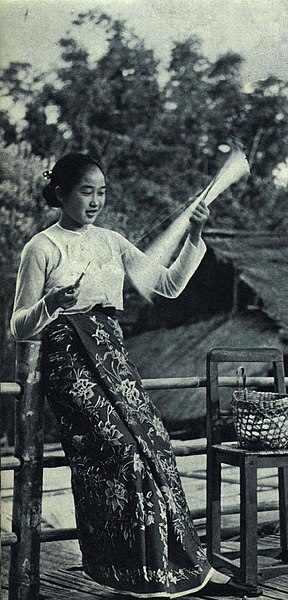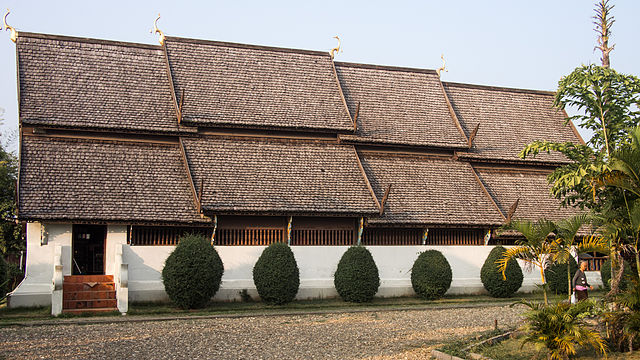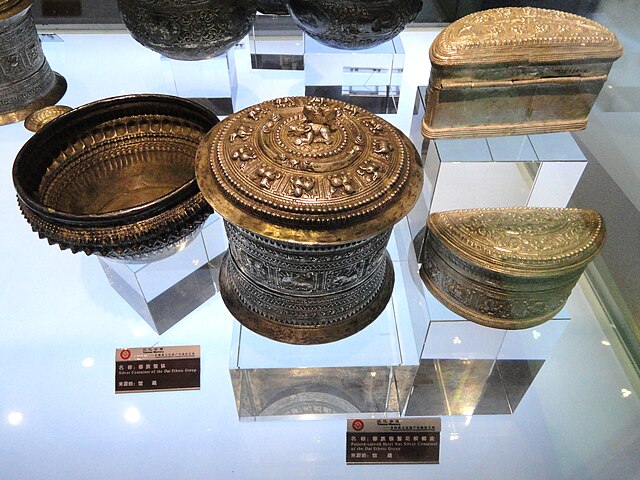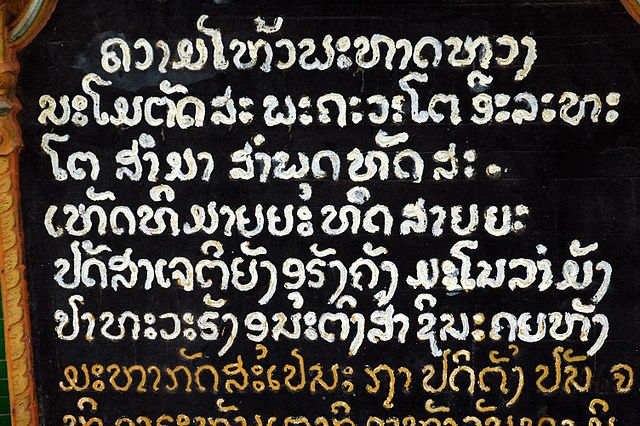The Dai people are several Tai-speaking ethnic groups living in the Xishuangbanna Dai Autonomous Prefecture and the Dehong Dai and Jingpo Autonomous Prefecture of China's Yunnan Province. The Dai people form one of the 56 ethnic groups officially recognized by the People's Republic of China. By extension, the term can apply to groups in Laos, Vietnam, Thailand and Myanmar when Dai is used to mean specifically Tai Yai, Lue, Chinese Shan, Tai Dam, Tai Khao or even Tai in general. For other names, see the table below.
1962 photograph of a Dai girl weaving silk in Dehong Prefecture, Yunnan
Wat Rong Ngae is a Thai Lue temple in Pua District, Nan Province
Dai containers (silver). Metalwork in the Yunnan Provincial Museum.
Dai Buddhist text. Manuscripts / writing systems in the Yunnan Nationalities Museum
Lao, sometimes referred to as Laotian, is the official language of Laos and a significant language in the Isan region of northeastern Thailand, where it is usually referred to as the Isan language. Spoken by over 3 million people in Laos and 3.2 million in all countries, it serves as a vital link in the cultural and social fabric of these areas. It is written in the Lao script, an abugida that evolved from ancient Tai scripts.
Wat Phra That Phanom in Nakhon Phanom. Built in the 16th century over earlier Khmer ruins when Isan was part of Lan Xang, the temple is an important place of pilgrimage, attracting Lao from Laos as well as Isan to its temple festivals.
Temple mural of Wat Photaram in Maha Sarakham Province. Dating to the reign of Siamese Ruler Rama III (1788–1851), the writing is in the Tai Noi script, an old form of the Lao alphabet.
A bilingual Lao-French street sign in Vientiane. Although the influence of French on the Lao language has waned considerably, hundreds of words of French origin are used in Laos.
Lao script on a sign at Wat That Luang, Vientiane.








